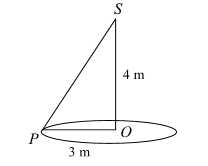As per analysis for previous years, it has been observed that students preparing for NEET find Physics out of all the sections to be complex to handle and the majority of them are not able to comprehend the reason behind it. This problem arises especially because these aspirants appearing for the examination are more inclined to have a keen interest in Biology due to their medical background.
Furthermore, sections such as Physics are dominantly based on theories, laws, numerical in comparison to a section of Biology which is more of fact-based, life sciences, and includes substantial explanations. By using the table given below, you easily and directly access to the topics and respective links of MCQs. Moreover, to make learning smooth and efficient, all the questions come with their supportive solutions to make utilization of time even more productive. Students will be covered for all their studies as the topics are available from basics to even the most advanced.
.
Q1. A concave lens of focal length 20 cm placed in contact with a plane mirror acts as a convex mirror of focal length
Solution
For lens, mirror combination, combined focal length is given by1 𝐹 = 2/ 𝑓 + 1 /𝑓𝑚 Here, 𝑓𝑚 = ∞
For lens, mirror combination, combined focal length is given by1 𝐹 = 2/ 𝑓 + 1 /𝑓𝑚 Here, 𝑓𝑚 = ∞
Q2.The focal lengths of the objective and the eye piece of telescope are 100 cm and 10 cm respectively. The magnification of the telescope when final image is formed at infinity is
Solution
For a telescope, magnification when final image is formed at infinity.𝑚∞ = 𝑓/ 𝑒 = 100/ 10 = 10
For a telescope, magnification when final image is formed at infinity.𝑚∞ = 𝑓/ 𝑒 = 100/ 10 = 10
Q3. A plane mirror reflects a pencil of light to form a real image. Then the pencil of light incident on the mirror is
Solution
when at covergence point O, a covergent beam of light is incident on the plain mirror.
when at covergence point O, a covergent beam of light is incident on the plain mirror.
Q4. A converging lens is used to form an image on a screen. When upper half of the lens is covered by an opaque screen
Solution
Because to form the complete image only two rays are to be passed through the lens and moreover, since the total amount of light released by the object is not passing through the lens, therefore image is faint (intensity in decreased).
Because to form the complete image only two rays are to be passed through the lens and moreover, since the total amount of light released by the object is not passing through the lens, therefore image is faint (intensity in decreased).
Q5.Relation between critical angles of water and glass is
Solution
𝜇𝑤 < 𝜇𝑔 ⇒ 𝑐𝑤 > 𝑐𝑔 .
𝜇𝑤 < 𝜇𝑔 ⇒ 𝑐𝑤 > 𝑐𝑔 .
Q6. A thin rod of length is kept along the axis of a concave mirror of focal length such that its image is real and magnified and one end touches the rod. Its magnification
Q7.A fish, looking up through the water sees the outside world contained in a circular horizon. If the refractive index of water is 4/3 and the fish is 12 cm below the surface of water, the radius of the circle in centimetre is
Q8.One of the refracting surfaces of a prism of angle is silvered. A ray of light incident at an angle of retraces its path. The refractive index of the material of prism is
Q9.A source is at 4m height above the centre of a circular table of a circular table of radius 3m. The ratio of illuminance at and will be:
Solution
𝐸0 =I/𝑟2=I/(4)2=I/16 = 𝐸𝑝=I cosθ /𝑟′2 = 𝐼 × (415) /(5)2
𝐸0 =I/𝑟2=I/(4)2=I/16 = 𝐸𝑝=I cosθ /𝑟′2 = 𝐼 × (415) /(5)2
Q10. The sun’s diameter is and its distance from the earth is . The diameter of its image, formed by a convex lens of focal length will be










